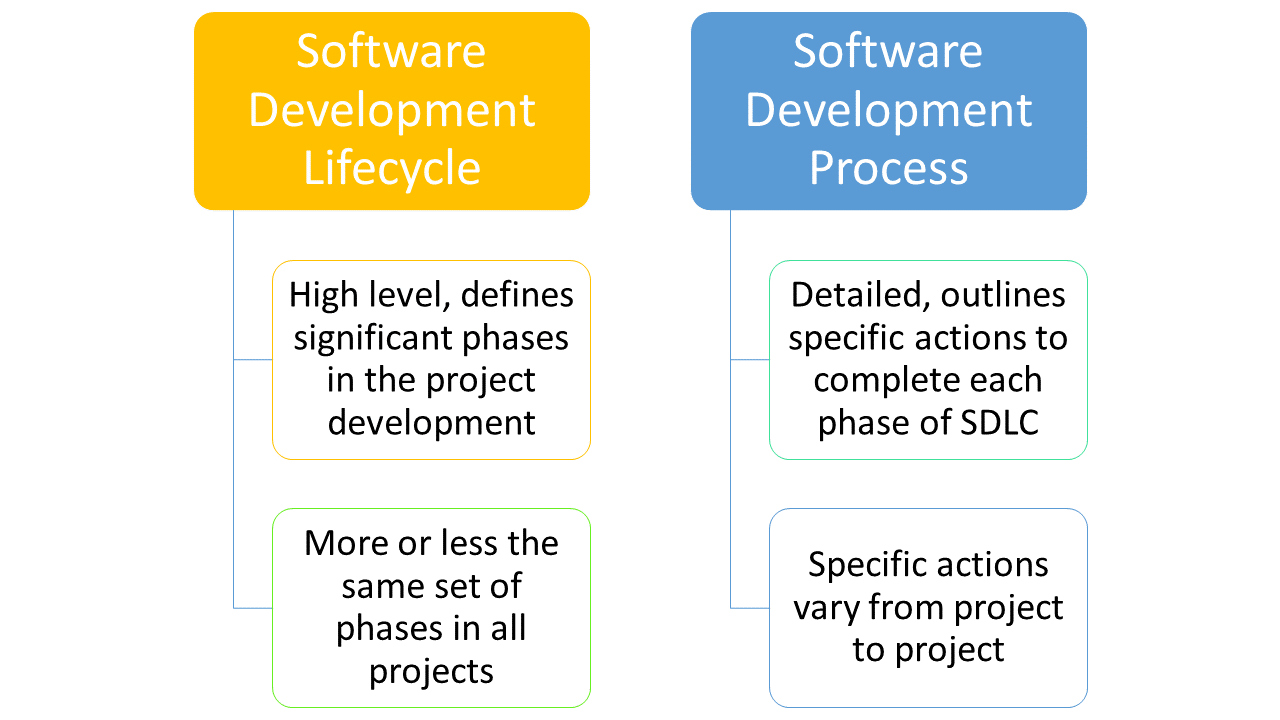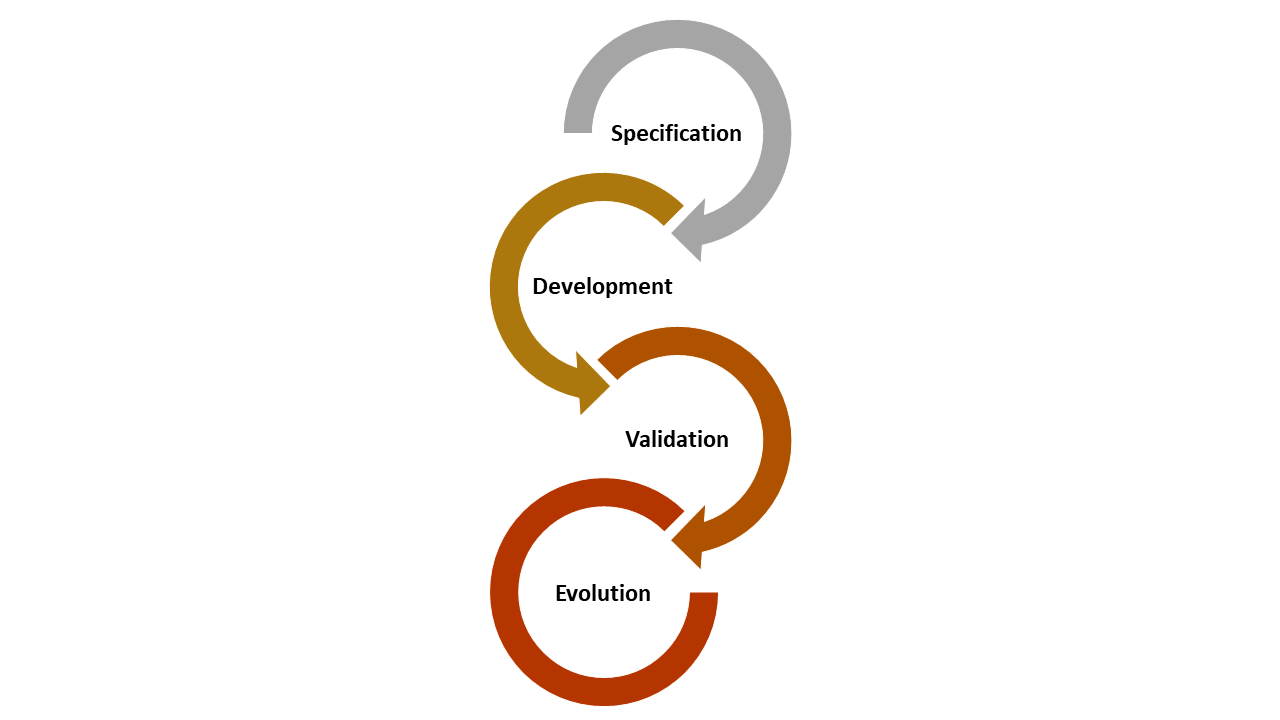Understanding the Software Development Process
|
|
Building a software application involves much more than just coding. One needs to gather requirements, chalk out a plan of action for the system, and then start building it. It doesn’t just stop there; you also need to ensure that the application is of premium quality and continues to be so despite the changes introduced in later cycles. Thus, we see that software development is a process instead of just a single activity.
In this post, we will delve into the software development process to gain a better understanding.
What is a software development process?
Simply put, the software development process is a step-by-step approach used to create good-quality software. It is used to provide guidelines for teams to follow during each phase of the project, ensuring the quality and reliability of the software.
How does it differ from the software development lifecycle (SDLC)?
Both the software development process and SDLC talk about the same thing – how to build a software application. However, they differ slightly in their focus area. SDLC is a high-level view that emphasizes the stages and their sequence in software development from inception to completion.
On the other hand, the software development process is the specific set of activities, tasks, and techniques followed within a chosen SDLC model. It defines how software is designed, coded, tested, and deployed. So, you will see that the process followed within each phase changes depending on the SDLC model chosen.

Standard stages of the software development process
The approach to tackling each phase of the chosen SDLC model follows the following steps.

A thing to note here is that these steps are fluid, and all of them may not apply to every phase. This will be better explained with the following example.
Example of applying software development process to SDLC phases
In the example below, we are using the Waterfall SDLC model to show the software development activities for each phase.
Requirements Gathering and Analysis
- Engage with stakeholders to elicit and document detailed requirements.
- Conduct interviews, surveys, and workshops to gather user needs.
- Analyze the gathered requirements to determine scope and feasibility and then prioritize them.
- Create a comprehensive document that includes functional and non-functional requirements.
Planning
- Devise a project plan to include project objectives, goals, success criteria, timelines, budgets, and resource allocations.
- Create a risk management plan for the identified risks.
- Determine the team members for the project at hand and allocate responsibilities.
Design
- Create relevant architectural diagrams and system designs. This also includes wireframes and prototypes for the UIs.
- Plan the tools and frameworks to be used along with the data storage strategy, security checks, and scalability feasibility.
Implementation (Coding)
- Create the application in code by referring to the design documents.
- Conduct code reviews to ensure code quality and adherence to best practices and guidelines.
Testing
- Perform different types of testing like unit testing, integration testing, and end-to-end testing.
- Identify and report defects and issues.
- Continuously test and debug the software throughout development.
Read here the list of the top 7 automation testing tools.
Deployment
- Configure servers, databases, and infrastructure components as necessary.
- Conduct final testing in a production-like environment.
- Roll out the software to end-users and try to ensure a smooth transition for them.
Maintenance and Support
- Provide support to address bugs, security vulnerabilities, and other user issues.
- Implement system maintenance through updates, patches, and enhancements as required.
- Maintain a customer support system for user inquiries and issue resolution.
What are software development processes or methodologies?
Software development processes provide certain principles and practices based on which you can chalk out each phase of the SDLC. Though these methodologies offer detailed guidance on how to execute each phase, they focus on the practical aspects of development. One can easily tweak them as per their project’s needs.
Types of software development processes
Waterfall model
The Waterfall model is a linear and sequential approach to software development. It consists of distinct phases, including requirements, design, implementation, testing, deployment, and maintenance, with each phase building upon the previous one. Changes are difficult to accommodate once a phase is completed. It is suitable for projects with well-defined and stable requirements.
Agile software development
Agile is an iterative and flexible approach that values collaboration, customer feedback, and the ability to adapt to changing requirements. Agile methodologies, such as Scrum, Kanban, and Extreme Programming (XP), involve breaking the project into smaller, manageable iterations or sprints. Teams work closely with stakeholders, prioritize features, and deliver software increments in short cycles. Agile processes promote continuous improvement and respond well to evolving customer needs.
See a roadmap to better Agile testing.
DevOps
DevOps integrates software development (Dev) and IT operations (Ops) to reduce the time between code changes and deployment to production. It emphasizes automation, collaboration, and a continuous delivery pipeline.
Here is a brief introduction to DevOps testing tools every QA should know about.
Rapid application development (RAD)
RAD prioritizes rapid prototyping and quick iterations to deliver a functional prototype quickly and then iteratively enhance it based on feedback. RAD is suitable for projects with evolving requirements that need fast development cycles.
Spiral model
The Spiral Model is risk-driven and combines iterative development elements with Waterfall model aspects. It involves iterative cycles, with each cycle consisting of planning, risk analysis, engineering, and evaluation phases. The Spiral Model is often used for large, complex projects where managing risks is critical.
Incremental and iterative development
This is a generic approach that involves breaking a project into smaller increments or iterations. Each increment builds upon the previous one, allowing for flexibility and regular customer feedback.
Here is an article to understand testing methodologies to propel your QA forward.
Tips to achieve a smooth software development process
Choose a process that satisfies your project requirements: When opting for a development approach, be sure to understand what your project needs and make an informed decision accordingly. Do some market research and peer inquiries to get real-time feedback on each shortlisted option.
Don’t shy away from tweaking a process to meet your project’s needs: These processes are meant to make software development easy. You can always add or subtract steps or phases that do not apply to your project.
Be thorough with planning each phase: Spend a good deal of time in creating a systematic plan of what steps should be included in each phase of your process. This will help you avoid future confusion and definitely propel your team’s productivity.
Break your project into smaller achievable goals: This one is important not just from a delivery standpoint but also for your team’s morale.
Reserve sufficient time for testing: The importance of testing cannot be overlooked. Yet, teams struggle to cover the ground under time constraints. Hence, make sure to plan well ahead for this. Here is a complete guide for test planning.
Keep an open communication channel: Ensuring that all teams are working as a single unit to give a successful product to the customer is a task that often gets sidelined. This step will help you ensure that you can get help from all parties involved as and when required, thus ensuring timely delivery of a good quality product.
Use continuous integration and version control: These two will help streamline your process further by keeping you prepared in case of untimely issues. Know here what is CI/CD.
Wrapping it up
The software development process serves as a guide to building a good quality product by delving into how the work is done within each phase or stage of the chosen SDLC. Based on your project’s requirements, choose an approach that best suits you. Remember that a customized approach will yield the best results, so feel free to tweak things.
Intelligent AI-powered test automation tools such as testRigor can help you reach your testing goals faster, with the least effort and cost. It allows you to write your tests in plain English, backed by the power of NLP and generative AI. Using testRigor, everyone in your team, irrespective of their technical skills, can contribute to testing easily.
| Achieve More Than 90% Test Automation | |
| Step by Step Walkthroughs and Help | |
| 14 Day Free Trial, Cancel Anytime |












